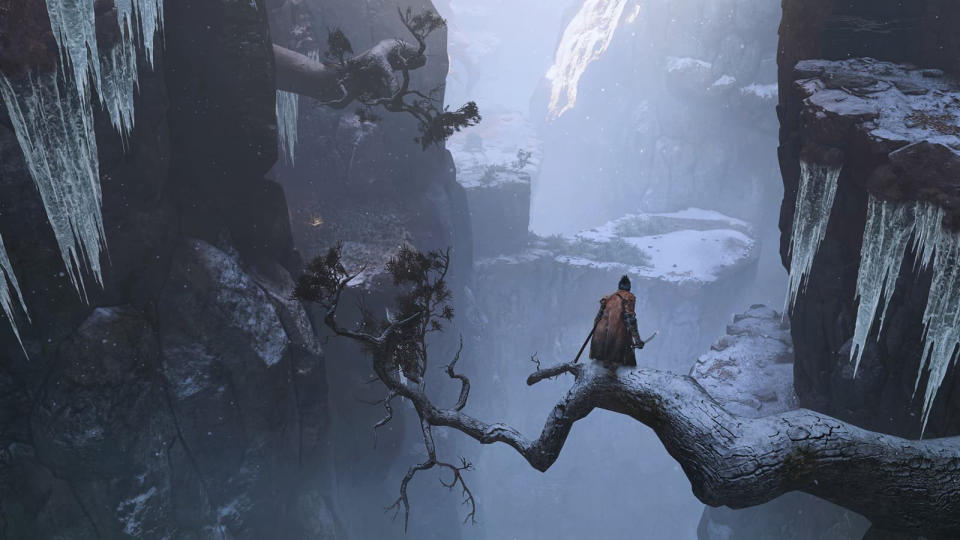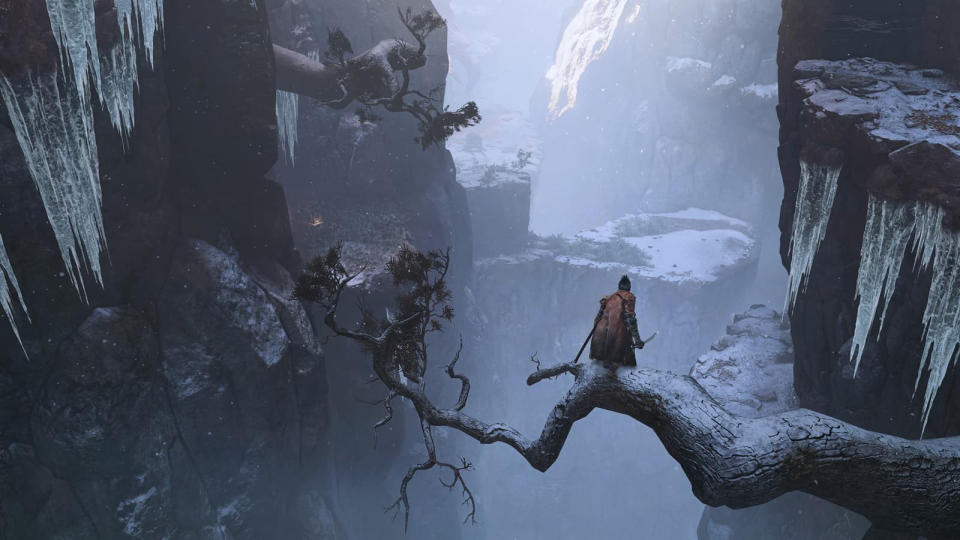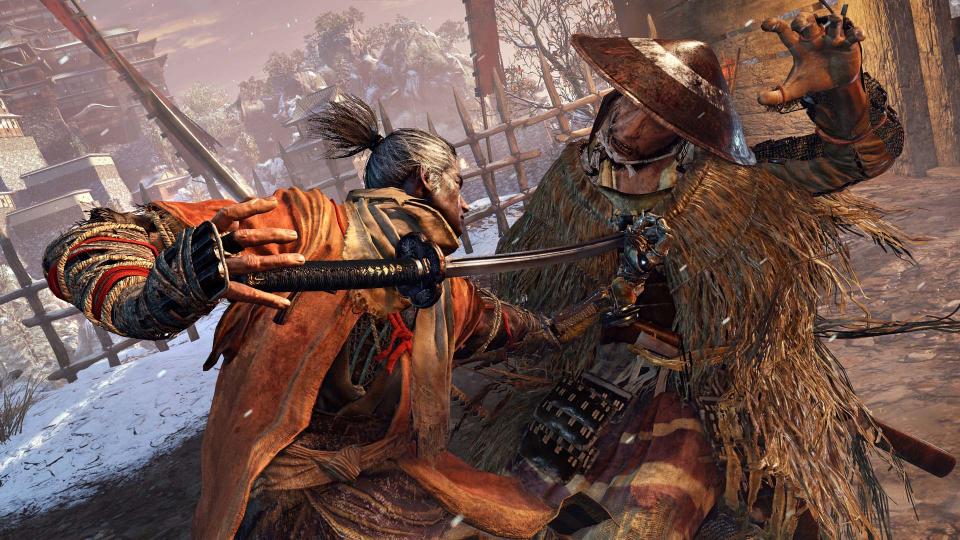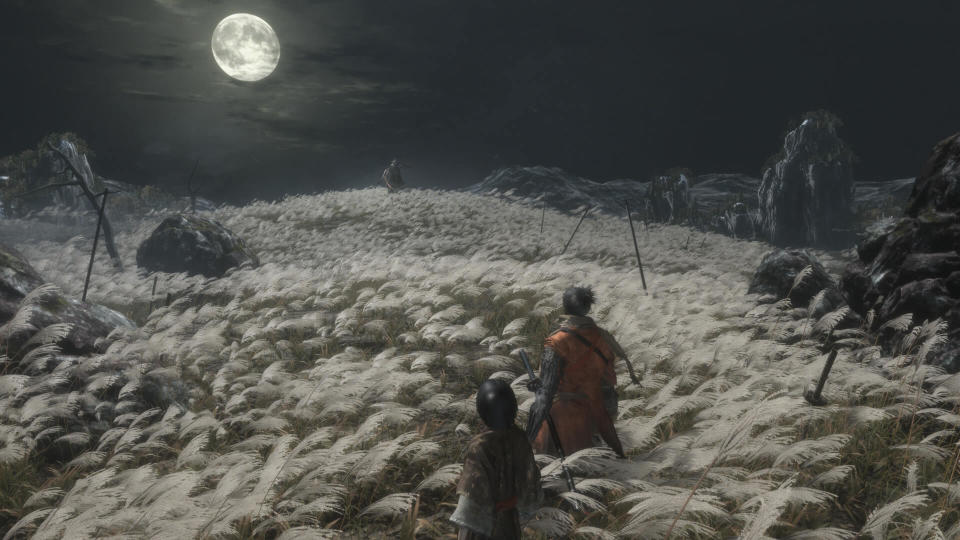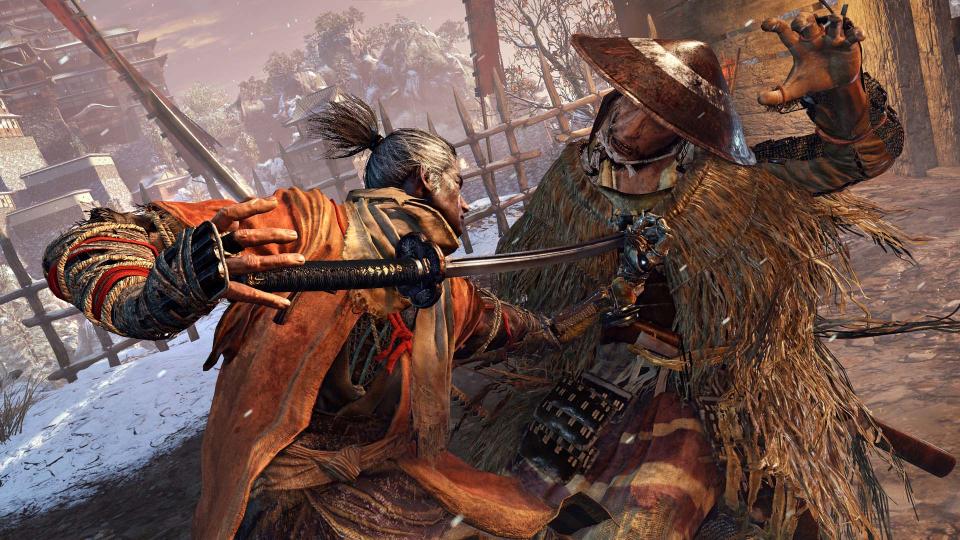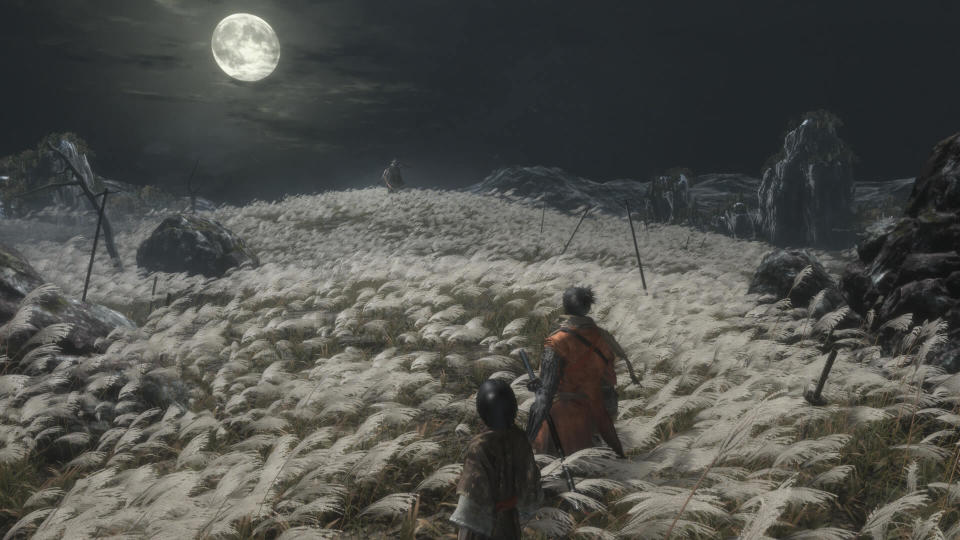‘Sekiro’ continues the work that ‘Bloodborne’ started
Miyazaki is moving further away from the Souls template.
Sekiro: Shadows Die Twice doesn't represent a seachange from the formula that Dark Souls creator Hidetaka Miyazaki has been refining over the past decade, but it does take that blueprint in a welcome new direction.
At Gamescom, I spent an hour or so wayfinding, tackling ever-more-threatening foes and dying, repeatedly. So far, so Souls. But the switch from a European Gothic aesthetic to Sengoku-era Japan is more than a palette swap.
In many ways Sekiro feels like the game Miyazaki wanted to make with Bloodborne. While Bloodborne definitely deviated from its predecessors -- most notably with fast-paced combat centered on dodging foes and canceling attacks with gun parries -- it mostly shared the Souls DNA: Distinct classes, upgrading your character with currency obtained by killing enemies and slowly exploring and unlocking a labyrinthine map. Sekiro builds on Bloodborne's basic combat while shedding many of the genre tropes.
You play as a Ninja sworn to protect a young lord. Your master was taken, however, and to add injury to insult his kidnapper also cut your arm off. This is a more coherent and clear setup than what we're used to from Miyazaki, but following this motivational opener, the game then becomes a more typical FromSoftware journey, steeped in environmental storytelling, eavesdropping and lore.
While you start every Souls game vulnerable, in Sekiro the protagonist stays fragile throughout the game. There are no classes, there is no armor to unlock, there are no stats to upgrade and you'll never reach a point where you feel like you can tank a group of weak enemies. You're always a mistake away from death, but you're better equipped than ever before to prevent that from happening.
For starters, in place of your arm, you're equipped with a "shinobi prosthetic," which acts as a secondary weapon and takes many forms. In the demo, an axe is used to break shields, shurikens whittle down a foe's health from afar and fire, well, sets fire to stuff. These forms can all be used in tandem with your main weapon, a sword, to great effect: Quickly pressing attack after throwing a shuriken causes you to leap while thrusting your blade forward, dramatically closing the distance between you and your target, while the fire prosthetic can set your weapon ablaze for extra damage.

Swordplay is what makes Sekiro unique, though, as your blade is used to both attack and parry. A perfectly-timed parry adds to a gauge that, when full, will allow you to let loose a devastating attack. Slashing away at anything but the weakest of enemies won't bear much fruit.
Instead of slow, deliberate combat, then, individual confrontations play out more like a cross between Bloodborne, the counter-based combat of Street Fighter and the timing boss rush Furi. Seeing a counter gauge -- something more commonly found in fighting games -- is bizarre at first, but with the pace, setting and style of Sekiro, it feels like it belongs. Of course, it's not all about counters: Even in the short demo, I encountered multiple enemies that had unparryable attacks, though, so typical FromSoftware skills like learning the tells that precede a devastating swipe are as important as ever.
As in any Souls game, then, much of the combat revolves around what you do when you're not attacking. The side-dodge from Bloodborne makes a welcome return here, offering a low-stakes way to avoid danger, and reading the battlefield to know which enemies need taking out first is perhaps more important than knowing how to chain together an impressive flurry of attacks.
As you'd expect from a game where you play a ninja, stealth and tactics play a huge part in Sekiro. You can use a grappling hook to move around swiftly and get a better angle on an enemy, and leaping down on, or sneaking up behind, weaker enemies will let you perform an instant kill. Engaging a group of enemies without picking a few off in this manner beforehand will likely end in a swift death. But death doesn't necessarily mean the end.
New for Sekiro is the resurrection system. When the "Death" prompt appears, so too does "resurrect." Selecting that prompt returns you to life with half of your health, and a chance to take revenge. Die again and it's all over, but if you kill your executioner you recharge the resurrection power. The system is intended to counteract the fragility of the protagonist, keep the pace of the game fast and also give rise to new strategies. Allowing yourself to die in order to return when your killer's back is turned, for example, could be the swiftest way to defeat a tricky foe.
Resurrection feels like a sensible progression of Bloodborne's Regain system, which recovers health if you immediately retaliate after being hit. While that rewards aggression in the face of adversity, Resurrection generally encourages playing on the front foot, and softens the penalty (and, let's be honest, usually sheer rage) when you let your guard down for a second and get taken out by a weak enemy.
Despite the lack of stats and leveling, FromSoftware hasn't entirely abandoned its RPG roots. Progression comes from obtaining new abilities, skills and items. With the expanded toolset, FromSoftware's Yasuhiro Kitao explained through a translator, you'll be able to take on difficult enemies in new ways. There'll be some "build" flexibility in terms of which skills you equip and use -- one example given was using the shinobi prosthetic as a support tool rather than a pure weapon, tooling it for splash damage or status effects like poisoning.
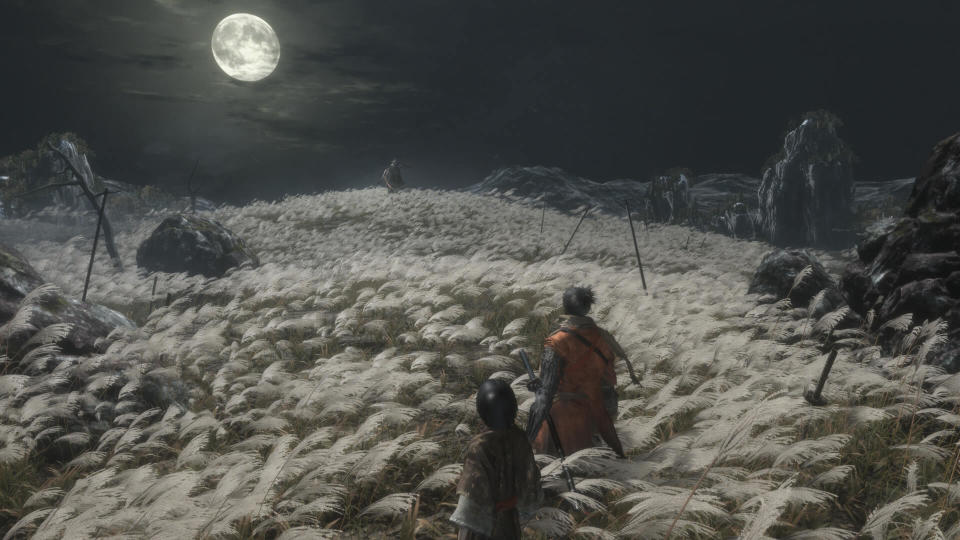
Doing away with classes also allows for more variety in boss design. With a fixed protagonist, Kitao said, the team has "a greater level of freedom in designing these bosses and balancing them around this character. We want the player to experiment and try every aspect of his arsenal, and use every available element to win."
There's a lot to admire about Sekiro. Despite first appearances, Miyazaki is deviating further from his tried-and-tested template. Yes, you'll still see FromSoftware's DNA throughout the game, but from using a grappling hook to scale buildings, to filling counter gauges to essentially pull off V-Triggers, this is the bold move that Bloodborne perhaps should've been. It's too early to talk definitively, obviously, but I'm definitely looking forward to March 22nd, 2019, when the game launches on PlayStation 4, Xbox One and PC.
Follow all the latest news live from Gamescom here!
